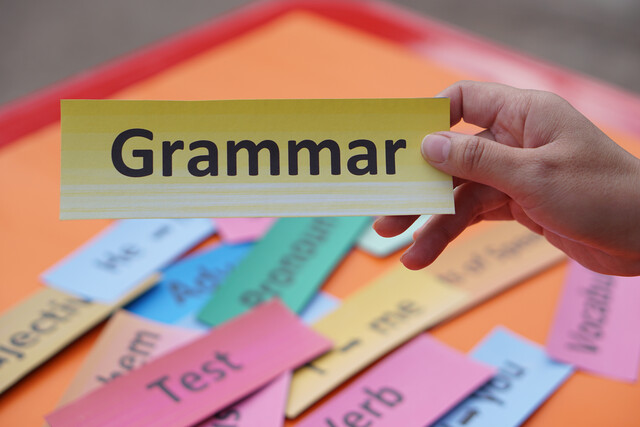Online Class: Historical Fiction Writing

no certificate
with CEU Certificate*
-
23Lessons
-
44Exams &
Assignments -
1,082Students
have taken this course -
23Hours
average time -
2.3CEUs
Course Description
The Ultimate Guide to Crafting Timeless Historical Fiction
Discover the magic of intertwining past epochs with creative narratives through the enriching world of historical fiction writing. This isn't just about recounting stories of bygone eras; it's about creating an immersive experience. Delve deep into a meticulous blend of factual research and imaginative storytelling, bringing long-forgotten times back to life with vividness and authenticity.
In this comprehensive course, embrace the dual roles of historian and novelist. Learn to weave tales where characters leap from being mere footnotes in dusty tomes to vibrant personalities, complete with emotions, desires, and challenges. Dive deep into an intricate realm where every costume, speech, and setting becomes an authentic echo from the past.
From understanding the very foundation of historical fiction to mastering the art of breathing life into the narratives, this course covers the vast spectrum of this genre and its numerous facets.
Course Breakdown:
- Lesson 1: Introduction to Historical Fiction - Journey to the Past
- Lesson 2: Elements of Historical Fiction - Foundations of the Genre
- Lesson 3-4: Delving into Sub-genres - Mysteries & Romances of Yore
- Lesson 5: Classic Historical Fiction and Beyond - The Timeless Tales
- Lesson 6-7: Crafting Characters & Evocative Settings - Bringing Stories to Life
- Lesson 8: Fiction vs Reality - Striking the Perfect Balance
- Lesson 9-11: Research Essentials - The Backbone of Authenticity
- Lesson 12: Engaging with Experts - Gleaning Wisdom from Historians
- Lesson 13: Historical Fiction vs. Historical Fact - Finding the Truth in Tales
- Lesson 14: Ensuring Authenticity - Steering Clear of Plagiarism & Misinformation
- Lesson 15-17: Crafting the Narrative - Plotting, Conflicts, and Subplots
- Lesson 18-19: Writing Techniques - Perfecting Pacing & the Art of "Show, Don't Tell"
- Lesson 20: Polishing Your Masterpiece - Editing & Re-editing
- Lesson 21-22: Navigating the Publishing Maze - Agents & The Art of the Query Letter
- Lesson 23: Wrapping Up - The Path Forward
As you traverse through each lesson, gain insights into the intricate elements that make a historical fiction piece stand out. Explore various sub-genres, dive deep into character motivations, map out captivating plots, refine your writing with editing masterclasses, and set forth confidently in the publishing realm.
By the end of this course, you won't merely understand historical fiction-you'll be adept at crafting tales that resonate with authenticity and timeless appeal. Enroll now, and embark on a journey that seamlessly marries the past with the present, creating narratives that future generations will cherish.
- Completely Online
- Self-Paced
- 6 Months to Complete
- 24/7 Availability
- Start Anytime
- PC & Mac Compatible
- Android & iOS Friendly
- Accredited CEUs

Course Lessons
Lesson 1. Crafting the Past: A Guide to Historical Fiction
 Review Practice Worksheet: Lesson-1-WorkSheet-20240.pdf
Review Practice Worksheet: Lesson-1-WorkSheet-20240.pdf Lesson discussions: Reasons for Taking this Course
Lesson discussions: Reasons for Taking this Course Complete Assignment: Introduction
Complete Assignment: Introduction Complete: Lesson 1 Assignment: Historical Fiction Ideas
Complete: Lesson 1 Assignment: Historical Fiction Ideas Assessment: Lesson 1 Exam
Assessment: Lesson 1 Exam
Lesson 2. Embarking on the Tapestry of Historical Fiction
 Review Practice Worksheet: Lesson-2-HomeWork-20242.pdf
Review Practice Worksheet: Lesson-2-HomeWork-20242.pdf Complete: Lesson 2 Assignment: Historically Realistic Characters
Complete: Lesson 2 Assignment: Historically Realistic Characters Assessment: Lesson 2 Exam
Assessment: Lesson 2 Exam
Lesson 3. Mystery Amidst the Pages of History
 Review Practice Worksheet: Lesson-3-Activity-20244.pdf
Review Practice Worksheet: Lesson-3-Activity-20244.pdf Complete: Lesson 3 Assignment: Your Sub-Genre Details
Complete: Lesson 3 Assignment: Your Sub-Genre Details Assessment: Lesson 3 Exam
Assessment: Lesson 3 Exam
Lesson 4. Ephemeral Love Across Centuries: A Journey Through Historical Romance
 Review Practice Worksheet: Lesson-4-HomeWork-20246.pdf
Review Practice Worksheet: Lesson-4-HomeWork-20246.pdf Complete: Lesson 4 Assignment: Historical Romance Writing
Complete: Lesson 4 Assignment: Historical Romance Writing Assessment: Lesson 4 Exam
Assessment: Lesson 4 Exam
Lesson 5. Essentials of Writing Great Historical Fiction
 Review Practice Worksheet: Lesson-5-Downloadable-20248.pdf
Review Practice Worksheet: Lesson-5-Downloadable-20248.pdf Complete: Lesson 5 Assignment: Historical Fiction Writing Exercise
Complete: Lesson 5 Assignment: Historical Fiction Writing Exercise Assessment: Lesson 5 Exam
Assessment: Lesson 5 Exam
Lesson 6. Authentic Portrayals of Our Historical Icons
 Review Practice Worksheet: Lesson-6-WorkSheet-20250.pdf
Review Practice Worksheet: Lesson-6-WorkSheet-20250.pdf Complete: Lesson 6 Assignment: Historical Character Writing Exercise
Complete: Lesson 6 Assignment: Historical Character Writing Exercise Assessment: Lesson 6 Exam
Assessment: Lesson 6 Exam
Lesson 7. Transporting Readers to the Past: Creating Authentic Historical Settings
 Review Practice Worksheet: Lesson-7-StudyGuide-20252.pdf
Review Practice Worksheet: Lesson-7-StudyGuide-20252.pdf Complete: Lesson 7 Assignment: Google!
Complete: Lesson 7 Assignment: Google! Assessment: Lesson 7 Exam
Assessment: Lesson 7 Exam
Lesson 8. Historical Tapestry: Crafting Fiction from Fact and Fantasy
 Review Practice Worksheet: Lesson-8-WorkSheet-20254.pdf
Review Practice Worksheet: Lesson-8-WorkSheet-20254.pdf Complete: Lesson 8 Assignment: Real or Make Believe?
Complete: Lesson 8 Assignment: Real or Make Believe? Assessment: Lesson 8 Exam
Assessment: Lesson 8 Exam
Lesson 9. Unveiling the Past: Writing with Authenticity
 Review Practice Worksheet: Lesson-9-Downloadable-20256.pdf
Review Practice Worksheet: Lesson-9-Downloadable-20256.pdf Complete: Lesson 9 Assignment: Pre Writing Questions
Complete: Lesson 9 Assignment: Pre Writing Questions Assessment: Lesson 9 Exam
Assessment: Lesson 9 Exam
Lesson 10. From Spark to Story: Crafting Narratives by Blending History and Fiction
 Complete: Lesson 10 Assignment: Your List
Complete: Lesson 10 Assignment: Your List Assessment: Lesson 10 Exam
Assessment: Lesson 10 Exam
Lesson 11. Exploring the Depths of Historical Narrative Creation
 Complete: Lesson 11 Assignment: The Process of Research
Complete: Lesson 11 Assignment: The Process of Research Assessment: Lesson 11 Exam
Assessment: Lesson 11 Exam
Lesson 12. Mastering Historical Narratives
 Complete: Lesson 12 Assignment: Begin Your Research
Complete: Lesson 12 Assignment: Begin Your Research Assessment: Lesson 12 Exam
Assessment: Lesson 12 Exam
Lesson 13. Breathing Life into Bygone Eras: Crafting Immersive Historical Fiction
 Complete: Lesson 13 Assignment: Adding Fictional Characters
Complete: Lesson 13 Assignment: Adding Fictional Characters
Lesson 14. Exploring Ethical Storytelling in Historical Fiction
 Complete: Lesson 14 Assignment: References
Complete: Lesson 14 Assignment: References Assessment: Lesson 14 Exam
Assessment: Lesson 14 Exam
Lesson 15. Mastering Story Arcs
 Complete: Lesson 15 Assignment: Plotting
Complete: Lesson 15 Assignment: Plotting Assessment: Lesson 15 Exam
Assessment: Lesson 15 Exam
Lesson 16. Engaging Tales: The Transformative Power of Conflict
 Complete: Lesson 16 Assignment: Conflict
Complete: Lesson 16 Assignment: Conflict Assessment: Lesson 16 Exam
Assessment: Lesson 16 Exam
Lesson 17. Subplots and Motivation in Novel Writing
 Assessment: Lesson 17 Exam
Assessment: Lesson 17 Exam
Lesson 18. Weaving the Perfect Narrative Tempo
 Complete: Lesson 18 Assignment: Pacing
Complete: Lesson 18 Assignment: Pacing Assessment: Lesson 18 Exam
Assessment: Lesson 18 Exam
Lesson 19. Show, Don't Tell: A Writer's Essential Guide
 Complete: Lesson 19 Assignment: Showing, Rather than Telling
Complete: Lesson 19 Assignment: Showing, Rather than Telling Assessment: Lesson 19 Exam
Assessment: Lesson 19 Exam
Lesson 20. Building Blocks of a Captivating Tale
 Complete: Lesson 20 Assignment: Editing
Complete: Lesson 20 Assignment: Editing Assessment: Lesson 20 Exam
Assessment: Lesson 20 Exam
Lesson 21. Navigating the Literary Labyrinth: The Indispensable Role of Agents
 Complete: Lesson 21 Assignment: Agent Research
Complete: Lesson 21 Assignment: Agent Research Assessment: Lesson 21 Exam
Assessment: Lesson 21 Exam
Lesson 22. Unlocking the Secrets of a Winning Query Letter
 Assessment: Lesson 22 Exam
Assessment: Lesson 22 Exam
Lesson 23. Historical Fiction: A Journey Through Time
 Lesson discussions: What is your opinion of this course?; Program Evaluation Follow-up Survey (End of Course); Course Comments; Course Comments
Lesson discussions: What is your opinion of this course?; Program Evaluation Follow-up Survey (End of Course); Course Comments; Course Comments Complete: The Final Assignment
Complete: The Final Assignment Assessment: The Final Exam
Assessment: The Final Exam
Learning Outcomes
- Demonstrate the ability to research and integrate historical details into creative storylines, enhancing narrative authenticity in historical fiction writing.
- Identify the key components of historical fiction by distinguishing between factual accuracy and fictional creativity within a narrative.
- Define how historical settings influence character development and plot progression in historical fiction.
- Identify the methods used to incorporate authentic historical details to enhance storytelling in historical fiction.
- Demonstrate the ability to design a compelling mystery plot within a chosen historical period, ensuring consistency with historical details and plausible character motivations.
- Identify the core characteristics of a successful historical mystery by analyzing examples of effective integration of historical authenticity and narrative intrigue.
- Define the role of historical setting in shaping characters and themes within historical romance and evaluate its effectiveness using specific examples.
- Demonstrate the ability to analyze the balance between historical accuracy and romantic elements in historical romance novels, identifying key techniques used by authors to maintain reader engagement.
- Analyze the approaches used in young adult historical fiction to engage younger audiences, such as incorporating alternate realities and 'choose your own adventure' narratives, enhancing critical thinking and historical understanding.
- Define the key elements of classic historical fiction, emphasizing the importance of thorough research and authentic character portrayal, to ensure an accurate reflection of historical contexts.
- Analyze and evaluate the ethical considerations in storytelling, balancing historical accuracy with creative narrative.
- Define and illustrate the motivations and challenges faced by historical characters within the context of their time.
- Analyze and describe the interplay between the historical setting and character development in a historical novel, identifying how the context influences character actions and relationships.
- Demonstrate mastery of lesson content at levels of 70% or higher.
Additional Course Information

- Document Your Lifelong Learning Achievements
- Earn an Official Certificate Documenting Course Hours and CEUs
- Verify Your Certificate with a Unique Serial Number Online
- View and Share Your Certificate Online or Download/Print as PDF
- Display Your Certificate on Your Resume and Promote Your Achievements Using Social Media

Choose Your Subscription Plan
No Certificate / No CEUs
This course only
| Includes certificate | X |
| Includes CEUs | X |
| Self-paced |

|
| Instructor support |

|
| Time to complete | 6 months |
| No. of courses | 1 course |
Certificate & CEUs
This course only
| Includes certificate |

|
| Includes CEUs |

|
| Self-paced |

|
| Instructor support |

|
| Time to complete | 6 months |
| No. of courses | 1 course |
Certificates & CEUs
Includes all 600+ courses
| Includes certificate |

|
| Includes CEUs |

|
| Self-paced |

|
| Instructor support |

|
| Time to complete | 12 Months |
| No. of courses | 600+ |
Certificates & CEUs
Includes all 600+ courses
| Includes certificate |

|
| Includes CEUs |

|
| Self-paced |

|
| Instructor support |

|
| Time to complete | 24 Months |
| No. of courses | 600+ |
Student Testimonials
- "This was a wonderful course with a great deal of information. I have always wanted to write my own historical fiction, I may never do it, but I feel I have the correct tools to try now!" -- Jana E.
- "I enjoyed being able to read work submitted by other students. It helped me understand how others were presenting their stories." -- Nancy C.
- "The work at my own pace is the absolute best! At times, I couldn't decide weather to write and take another lesson! Each topic was very engaging and some of them were pretty difficult." -- Angela H.
- "This was another great class with such a great instructor. If I have any problems she is extremely willing to help." -- Donna N.
- "The instructor was warm, friendly, and encouraging. The information is vital to those hoping to see their writing published was presented in an open, generous and encouraging way." -- Barbara P.
- "Everything was great!" -- Cathy K.
Related Courses
-
 17 hours
1.7 CEUs
ESL Basic Grammar and Writing
+ More Info
17 hours
1.7 CEUs
ESL Basic Grammar and Writing
+ More Info
-
 72 hours
7.2 CEUs
Writing Help Course Bundle
+ More Info
72 hours
7.2 CEUs
Writing Help Course Bundle
+ More Info
-
 52 hours
5.2 CEUs
ESL Grammar Skills: Level 1-5 Course Bundle
+ More Info
52 hours
5.2 CEUs
ESL Grammar Skills: Level 1-5 Course Bundle
+ More Info
-
 6 hours
0.6 CEUs
ESL Basic Grammar
+ More Info
6 hours
0.6 CEUs
ESL Basic Grammar
+ More Info
-
 5 hours
0.5 CEUs
Vocabulary Level 3
+ More Info
5 hours
0.5 CEUs
Vocabulary Level 3
+ More Info
-
 0 hours
2023-01-09 00:00:00 CEUs
Basic Writing Skills Level 3
+ More Info
0 hours
2023-01-09 00:00:00 CEUs
Basic Writing Skills Level 3
+ More Info
-
 9 hours
0.9 CEUs
ESL Grammar Skills Level 4
+ More Info
9 hours
0.9 CEUs
ESL Grammar Skills Level 4
+ More Info
-
 9 hours
0.9 CEUs
English Grammar Level 2
+ More Info
9 hours
0.9 CEUs
English Grammar Level 2
+ More Info
-
 12 hours
1.2 CEUs
How to Write Case Studies
+ More Info
12 hours
1.2 CEUs
How to Write Case Studies
+ More Info
-
 12 hours
1.2 CEUs
Advertising, Marketing and Sales Writing
+ More Info
12 hours
1.2 CEUs
Advertising, Marketing and Sales Writing
+ More Info
-
 9 hours
0.9 CEUs
ESL Grammar Skills Level 5
+ More Info
9 hours
0.9 CEUs
ESL Grammar Skills Level 5
+ More Info
-
 14 hours
1.4 CEUs
Journalism 101
+ More Info
14 hours
1.4 CEUs
Journalism 101
+ More Info
-
 6 hours
0.6 CEUs
English Grammar Level 3
+ More Info
6 hours
0.6 CEUs
English Grammar Level 3
+ More Info
-
 11 hours
1.1 CEUs
Writing Effective Emails in the Workplace
+ More Info
11 hours
1.1 CEUs
Writing Effective Emails in the Workplace
+ More Info
-
 29 hours
2.9 CEUs
Writing Basics 101: Spelling, Grammar, Punctuation, Writing Structures
+ More Info
29 hours
2.9 CEUs
Writing Basics 101: Spelling, Grammar, Punctuation, Writing Structures
+ More Info
-
 10 hours
1.0 CEUs
ESL Grammar Skills Level 3
+ More Info
10 hours
1.0 CEUs
ESL Grammar Skills Level 3
+ More Info
-
 11 hours
1.1 CEUs
ESL Basic Writing Skills
+ More Info
11 hours
1.1 CEUs
ESL Basic Writing Skills
+ More Info
-
 12 hours
1.2 CEUs
Write to Win: Secrets of Persuasive Writing
+ More Info
12 hours
1.2 CEUs
Write to Win: Secrets of Persuasive Writing
+ More Info
-
 5 hours
0.5 CEUs
Vocabulary Level 1
+ More Info
5 hours
0.5 CEUs
Vocabulary Level 1
+ More Info
-
 5 hours
0.5 CEUs
Vocabulary Level 2
+ More Info
5 hours
0.5 CEUs
Vocabulary Level 2
+ More Info
-
 16 hours
1.6 CEUs
Advertising Copywriter
+ More Info
16 hours
1.6 CEUs
Advertising Copywriter
+ More Info
-
 6 hours
0.6 CEUs
Essay Crafting 101: Turning Ideas into Masterpieces
+ More Info
6 hours
0.6 CEUs
Essay Crafting 101: Turning Ideas into Masterpieces
+ More Info
-
 11 hours
1.1 CEUs
English Grammar Level 1
+ More Info
11 hours
1.1 CEUs
English Grammar Level 1
+ More Info
-
 12 hours
1.2 CEUs
ESL Grammar Skills Level 1
+ More Info
12 hours
1.2 CEUs
ESL Grammar Skills Level 1
+ More Info






